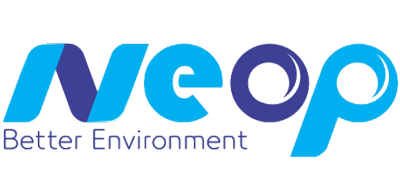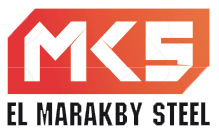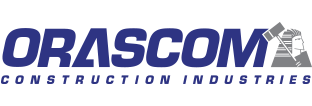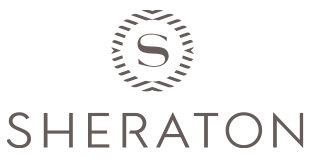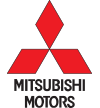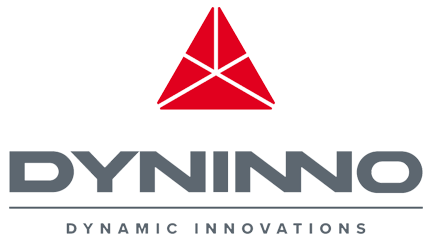Having a successful business isn’t just about generating revenues and profits. Businesses that suffer from high employee turnover end up struggling in the short-term and long-term.
This means that companies should focus more on retaining their employees.
The best way to do so is by measuring employee retention metrics and related employee engagement KPIs and metrics.
HR managers and generalists know that employee engagement and employee retention, today, go hand-in-hand.
Companies that understand the benefits of employee retention and aim to increase that retention, know that employee engagement is something they should consider.
But that’s not all. According to Gallup’s State of the Global Workplace 2022 Report, disengaged employees “cost the world $7.8 trillion in lost productivity! That’s equal to 11% of global GDP.”
It’s worth mentioning that because employee hiring and retention are essential elements in the HR field, you may find several overlapping points between this article and the one on HR KPIs and metrics.
In this article, we’ll be focusing on two closely-related types of metrics, these are employee engagement metrics and employee retention metrics.
What is employee engagement?
Different people have different beliefs about employee engagement. But the bottom line is, employee engagement focuses on employees in the workplace. How they feel about their jobs, the levels of involvement and enthusiasm they get to experience.
This statement by Gallup clearly explains what employee engagement is and isn’t:
“Engagement is not a characteristic of employees, but rather an experience created by organizations, managers and team members.”
The best way to engage employees is by creating an employee engagement, rewards, and recognition program. And to measure the effectiveness of your engagement and recognition program, you should measure employee engagement metrics.
You should also measure your employee retention KPIs and metrics, because they show if your engagement efforts are working–or not.
However, it’s worth mentioning that “engagement cannot be created through financial incentives.” (Gallup)
Many businesses believe that a simple increase in salary, whether for a new candidate or current employee, is the only means to retain them. It isn’t.
Employee engagement vs employee retention: What’s the difference?
We’ve mentioned that employee engagement and retention are considerably connected. But what are the differences between them exactly?
Employee engagement focuses on satisfaction, involvement, and the desire to help a business grow.
Engaged employees are happy with the work they do. They feel involved, motivated, and truly want to support the company they work for.
On the other hand, employee retention is about finding ways to ensure employees stay longer with your company.
Companies with a high employee retention rate and low employee turnover rate perform better because there’s less time and work wasted on handovers, orientation, and hiring.
Engaged employees are likely to stay longer with the company because they see themselves as part of its growth. The company’ success is their success.
Why employee engagement metrics and KPIs matter
When you think about employee engagement, you need to be aware that there are many factors at play. From your company’s HR policies and strategy, to training opportunities, to pay structure, all the way to your company culture.
How your company treats employees to how your employees treat and work with each other can affect the company. If your company relies on teamwork and collaboration, then you can expect positive performance both for your employees and your business.
Engaged employees “produce better business outcomes” than those who aren’t engaged. This is regardless of industry, country, company size, employees’ nationality, and economic times. (Gallup)
However, globally only 21% of employees are “engaged,” whereas in the United States, roughly 33% of employees feel ‘engaged.’ (Gallup).
Employee retention KPIs and metrics
Now, let’s look at the top employee retention metrics. This will help you understand how to retain employees longer and uncover problematic areas in your company.
1) Employee retention rate
The employee retention rate shows your company’s ability to entice employees to stay longer. The higher your employee retention rate, the lower your turnover rate will be.
To calculate your company’s employee retention rate, you’ll need to divide the number of employees in a specific period (ex: a year) by the total number of employees. Then, multiply the result by 100.
Employee retention rate = number of employees (in a year) ÷ total number of employees x 100
2) More focused retention rates
There are more retention rates to consider when evaluating employee retention metrics. These include 3 main sub-metrics:
a) Retention rate for company managers
This retention metric looks at how long your managers stay with your company.
When you measure employee retention, you include managers in general without considering specifics like expertise, their compensation and benefits scheme,…etc.
A low manager retention rate means you have poor company policies in place. You may be overloading your managers, not providing them with the tools they need to be effective, pressuring them with limited resources, or something else.
b) Retention rate per manager
This retention metric measures the average employee retention under different managers in your company.
Managers who have a high retention rate are likely to be better leaders, manage dynamic teams, or operate departments where employees feel empowered, engaged, and involved. Or a combination of those reasons.
However, it’s important to review this metric alongside the retention rate by age group. That’s because many older employees stay with a company where they feel secure and to avoid the risks involved with switching jobs.
Managers who have a high employee turnover rate may be inefficient at what they do, may be hiring unskilled employees, micro-managing their team, or something else.
To calculate your retention rate per manager, you’ll need to subtract the total of employees per manager from the number of employees who left that manager. Then, divide the result by the total number of employees under that manager, then multiply the result by 100.
Here’s what the equation looks like: (Source: Academy to Innovate HR)
Retention rate per manager = ((Total number of employees per manager – number of employees who have left per manager) / total number of employees per manager) x 100
c) Retention rate per age group and gender
This retention metric looks at the average age of employees who stay with a company for a longer period of time. It also looks at and compares the gender of those employees.
That’s why this sub-metric should be viewed alongside the retention rate per manager.
You may find that certain age groups remain with a particular manager for longer as opposed to another manager.
3) Employee turnover rate
The opposite of retention is turnover. Employee turnover, and the cost of employee turnover, fall under employee retention metrics and the broader HR KPIs and metrics.
Referred to as the rate of attrition, turnover measures the average number of employees who leave your company during a period of time.
Your turnover rate includes employees who:
- Leave your company
- Are laid off
- Are terminated
It is subdivided into the voluntary turnover rate and the involuntary turnover rate.
a) Voluntary turnover rate
The voluntary turnover rate measures the average number of employees who leave their job of their free will.
Employees leave for various reasons. It could be because:
- they found better opportunities or job offers elsewhere.
- they needed to relocate
- they want to join a better brand name
- they want to take care of family members
- you make poor job offers so employees seek better benefits elsewhere
or something else.
To calculate your voluntary turnover rate, you’ll need to divide the number of employees who left voluntarily (in a year) by the number of employees in that same period. Then, multiply the result by 100.
b) Involuntary turnover rate
Meanwhile, involuntary turnover involves employees who are terminated, whether laid off or dismissed during a period, often a year.
If your company has a high involuntary turnover rate, then you:
- Have poor manpower planning
- Don’t develop your employees
To calculate your involuntary turnover rate, you’ll need to divide the number of employees you dismissed or laid off by the number of employees in that same period. Then, multiply the result by 100.
4) Cost of employee turnover
In addition to measuring your employee turnover rate, you need to measure the cost of that turnover.
What many businesses don’t realize is that turnover comes at a cost. They may not feel the financial impact at the beginning, but a high turnover rate may result in lower revenues and profits at the end of the year.
This is especially the case when turnover is in the marketing, sales, or partnerships teams. Or all of them.
To calculate the cost of employee turnover, you should divide the number of employees who left your company during a period (a year) by the number of employees at the start of that period. Multiply the result by 100 to get a percentage.
Number of employees who left (in a year/ period) ÷ number of employees (at the start of the year/period) x 100
For example, if you started 2022 with 100 employees and 20 people left during the year, then the cost of turnover is 20/100 = 0.2 x 100 = 20%
5) Average tenure per employee
The average tenure per employee is both a retention and engagement metric. It shows how long an employee stays with your company because they’re happy and satisfied.
To measure the average tenure per employee, you’ll need to divide the total employment time for all your employees by the total number of employees.
Average employee tenure = Total employment time for all your employees ÷ Total number of employees
The higher your average employee tenure, the more your employees are satisfied, and the longer they will stay with your business.
HR employees can use this metric in each team and department to uncover why employees don’t stay too long. This average employee tenure metric can also help you make better decisions for your managers and teams.
Employee engagement metrics and KPIs
Now, let’s look at the top employee engagement metrics and KPIs you should be measuring at your company.
Remember, the higher your engagement metrics are, the higher your retention rate will be.
1) Employee satisfaction rate
Happy and satisfied employees are more likely to stay longer with your company and be motivated about their work. In other words, it’s a win-win.
Meanwhile, unhappy employees go about their job like it’s a chore. It’s a 9-to-5 job and they keep checking their watches and counting the minutes till they leave.
They’re not passionate about their work and they really don’t care if your company grows or not.
That’s where the employee satisfaction rate comes in. It measures your employees’ level of satisfaction. The best way to do so is using the employee Net Promoter Score (eNPS).
The eNPS measures satisfaction on a scale of 1 to 10, where 1 means ‘highly unsatisfied’ or ‘highly unlikely’ and 10 means ‘highly satisfied’ or ‘highly likely.’
You ask employees a series of questions, they use the scale to answer, and their answers show how satisfied–or unsatisfied–they are.
Questions used to measure eNPS are similar to this one:
“Based on your experience, how likely are you to recommend [Company name] to your friends?”
You’ll need to divide responses into 3 categories based on scores. These are: Promoters, Passives, and Detractors.
- Promoters are those whose responses are either 9 or 10, indicating they’re highly satisfied.
- Passives are those whose responses range between 7 and 8, indicating they’re neither happy nor unhappy. They’re neutral. They may not recommend you to others but they’re unlikely to bad-mouth you.
- Detractors are the unhappy ones. Those who are least likely to recommend you. Their scores usually range from 1 to 6.
To calculate eNPS in your company, you’ll need to subtract the percentage of detractors from the percentage of promoters.
eNPS = % of promoters – % of detractors
2) Employee engagement score
Employee engagement can play a major role in improving employee motivation, loyalty, and retention. Assuming you’re doing it right.
You can engage employees using an employee recognition, engagement, and rewards program.
But to measure your employees’ engagement score, you’ll need to conduct either a pulse or engagement survey. Or series of surveys.
“Without employee engagement, there’s no team engagement, making it more difficult to improve business outcomes.” – Gallup
3) Professional development
Companies with satisfied employees usually have some kind of professional development program. This can include educational or self-development programs, online or in-person courses, in-house or external training…etc.
Research by the Harvard Business Review (HBR) found that 94% of employees were more likely to remain at company if it provided them with training or courses. Employees feel like the company cares about them and invests in them, making them more satisfied and eager to stay.
The research also found that employees who are offered professional development opportunities are 15% more engaged than those who don’t.
4) Recognition
If you access professional websites like LinkedIn, you’ll find employees repeatedly stressing how they wish their employers would recognize them and their efforts.
When employees get recognition for their work, efforts, and achievements, they become happier and more motivated.
Your HR team, headed by your HR manager, should create a company culture that supports employees and helps them grow. A culture that’s built on recognizing employees and their achievements is one that’s more likely to grow.
Recognition is both an employee retention and employee engagement metric. However, it’s important you ensure that employee recognition isn’t confused with favoritism.
A study by Gallup and WorkHuman of 7,500 US employees, found that employee recognition
- Increases employee satisfaction.
- Makes employees less likely to leave a company.
- Increases motivation and productivity.
- Improves employee engagement.
- Enhances connectedness to their colleagues and the organization.
- Reduces absenteeism.
Final words
Employee engagement, happiness, satisfaction are connected and support your employee retention efforts.
If your employees and teams are satisfied, engaged, and motivated, they’re likely to do more. They feel as if your business is an extension of them.
In other words, employee engagement empowers your employees.
However, if your employees don’t work well with each other; if each team acts as an island and blames others for any problems that may arise, then you can expect conflict, low business performance, and a high turnover, putting your business at risk.
To see how satisfied and engaged your employees are, you’ll need to measure the employee engagement metrics mentioned above.
You should also tie in those metrics with your employee retention KPIs and efforts and your broader HR and business strategy.
Your employee retention and engagement program should be factored in your HR budget. You should also mention you have such a program when interviewing candidates or onboarding new hires. It should be part of your compensation and benefits strategy.
If you need help creating or measuring your employee engagement and retention metrics and KPIs, get in touch with Tawzef and our team will guide you through the process.
If you’d like to learn more about HR and business KPIs and metrics, read the other articles in this series:
- What Are the Most Important Recruiting KPIs?
- Everything You Need to Know About Employee Training and Development KPIs



























